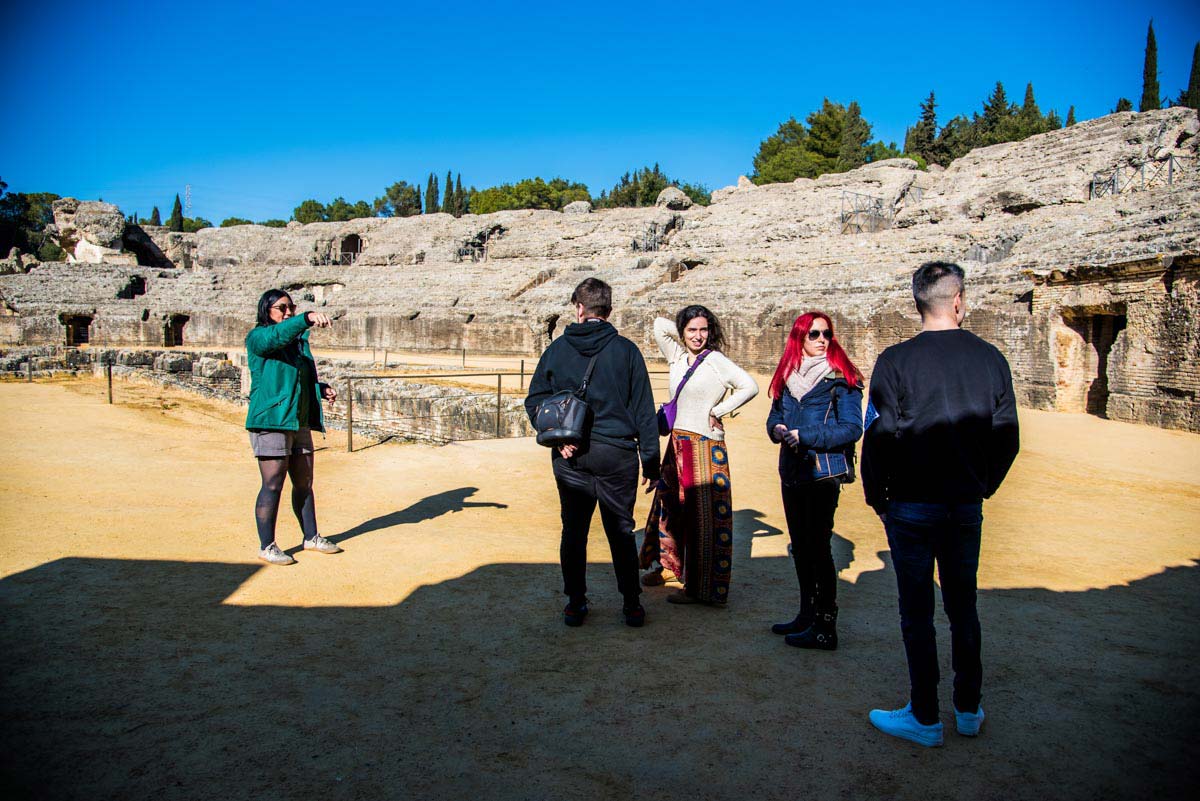Discover what to see in Italica, the Roman city of Santiponce.
The great history of Italica
The Roman city of Italica located in Santiponce, had a great strategic role during the high Roman Empire, something that is evident in the surface that came to occupy some 50 hectares.
Italica was the first city founded on the Iberian Peninsula, in 206 BC, after General Publio Cornelio Escipión defeated the Carthaginians at the Battle of Ilipa, developed in the context of the second Punic War.
The Italica Archaeological Complex was located between Hispalis (Seville) and Ilipa (River of Alcalá). After victory, General Publio established a detachment of legionaries on Cerro de San Antonio.
It is in the second half of S.I. a.C. when the city acquires the municipal statute, to later acquire the colony statute during the government of the Emperor Adrian (117-138 d.C).
The main visible area of the Itálica ruins covers the remains of the extension that was made under the command of Adriano. The Roman city of Italica was the birthplace of the emperors Trajano and Adriano, besides being the point of origin of the great senators of the all time.
After the Roman period, the memory of Itálica will begin to recover, between S.XVI and XVII, thanks to the humanist and poet Rodrigo Caro, who will be followed by others like Fray Fernando de Zevallo with his archaeological studies of Itálica or Francisco de Bruna that he made the first sculptural findings.
To guarantee their preservation, the Archaeological site of Italica was declared National Monuments to the ruins of Italica in 1912.
Currently in Italica you can visit the spectacular Roman Amphitheatre and will be able to stroll along the path of what were their streets . Discover era houses, public buildings and maveled with art objects and utensils employing its inhabitants.
The Amphitheater of Italica
The Amphitheater in Italica was the last great stage of Game of Thrones in Spain. It is not surprising that the film producer chose this location, since the Amphitheater in Italica was one largest Roman Empire, with capacity for about 25,000 spectators.
The roman amphitheater was used to host the “blood shows” and combats between gladiators that staged “to death” historical war episodes, hunting and fighting between different animals.
The name of the amphitheater of Italica is due to the fact that its constructive form is equivalent to that of two opposed theaters.
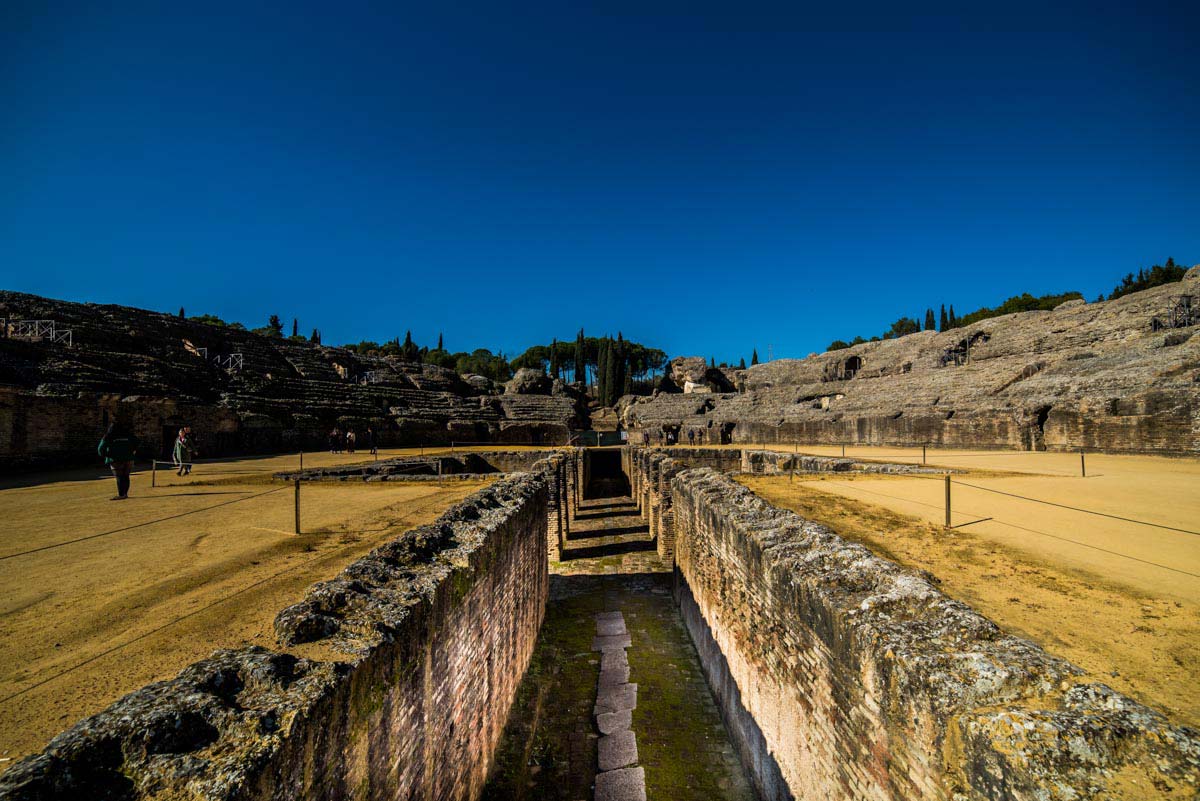
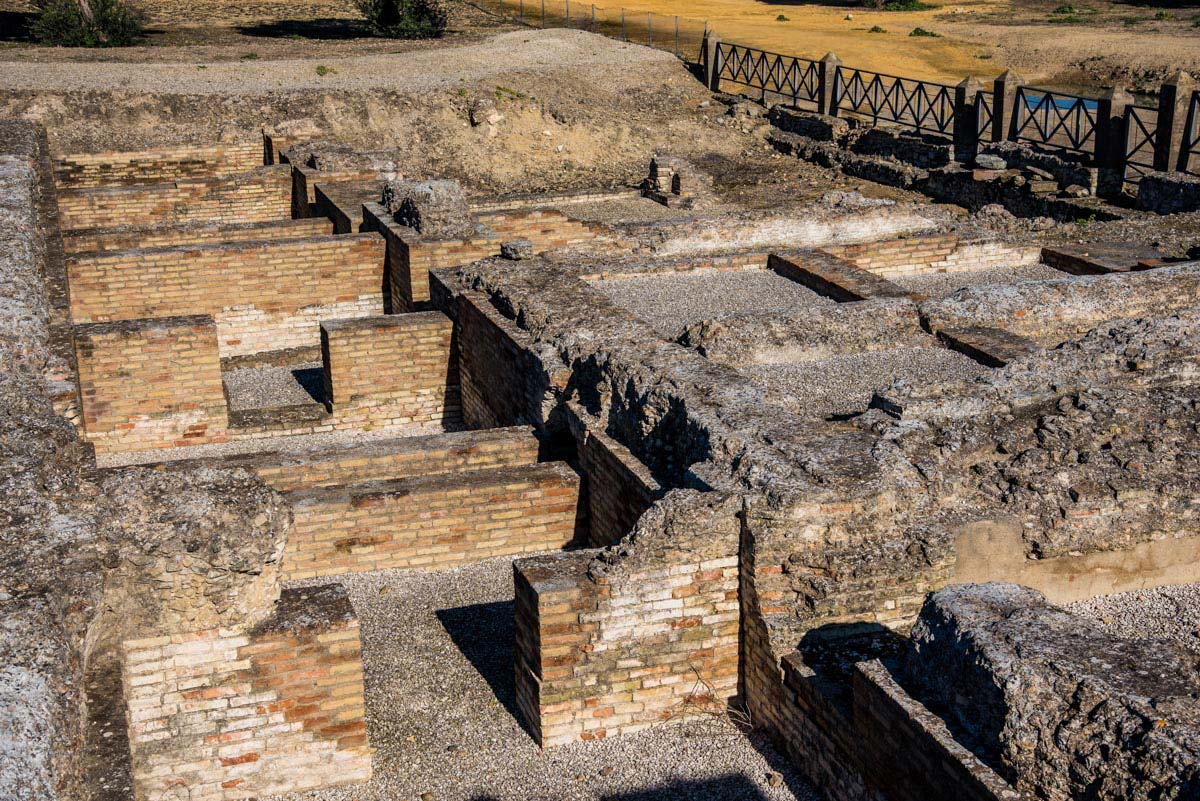
The largest thermal baths of Italica
The spas, besides being a place to bathe, were also a place where they practiced exercise, they gave themselves massages, they had a solarium and even a library. They were a center of social and cultural encounter for men and women of different classes.
The structure and distribution of swimming pools and ovens are still preserved in Italica’s major thermal baths. This spa set came to occupy an area of more than 30,000 square meters, with a structure similar to that of Hellenistic gyms.
You can also find the minor thermal baths of Trajan, which are located in the old city and are visible within the town of Santiponce.
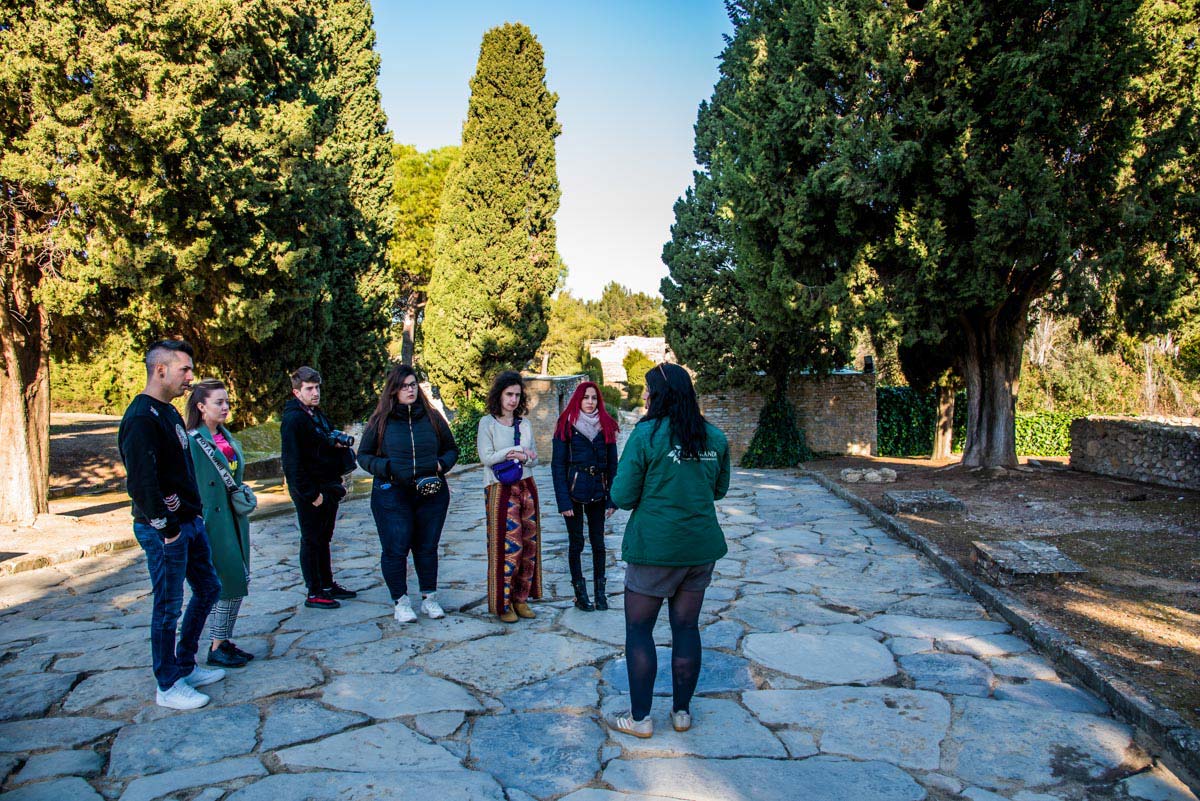
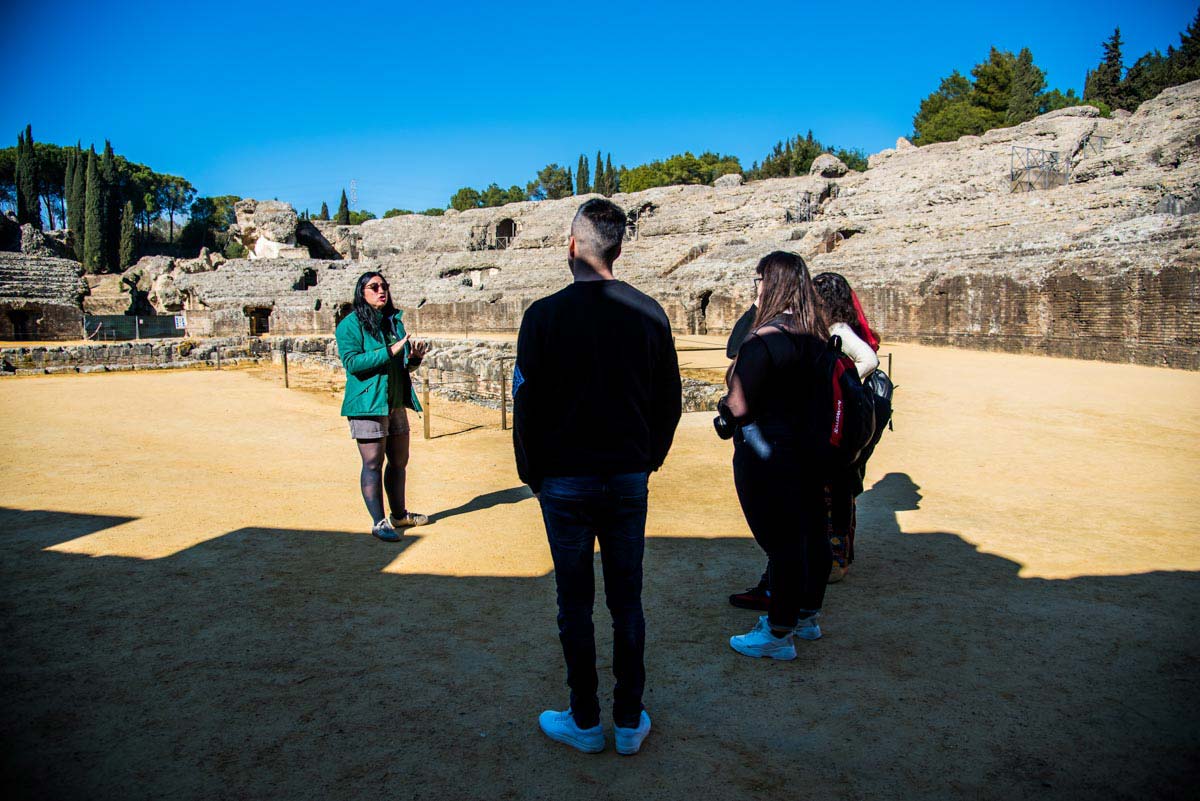
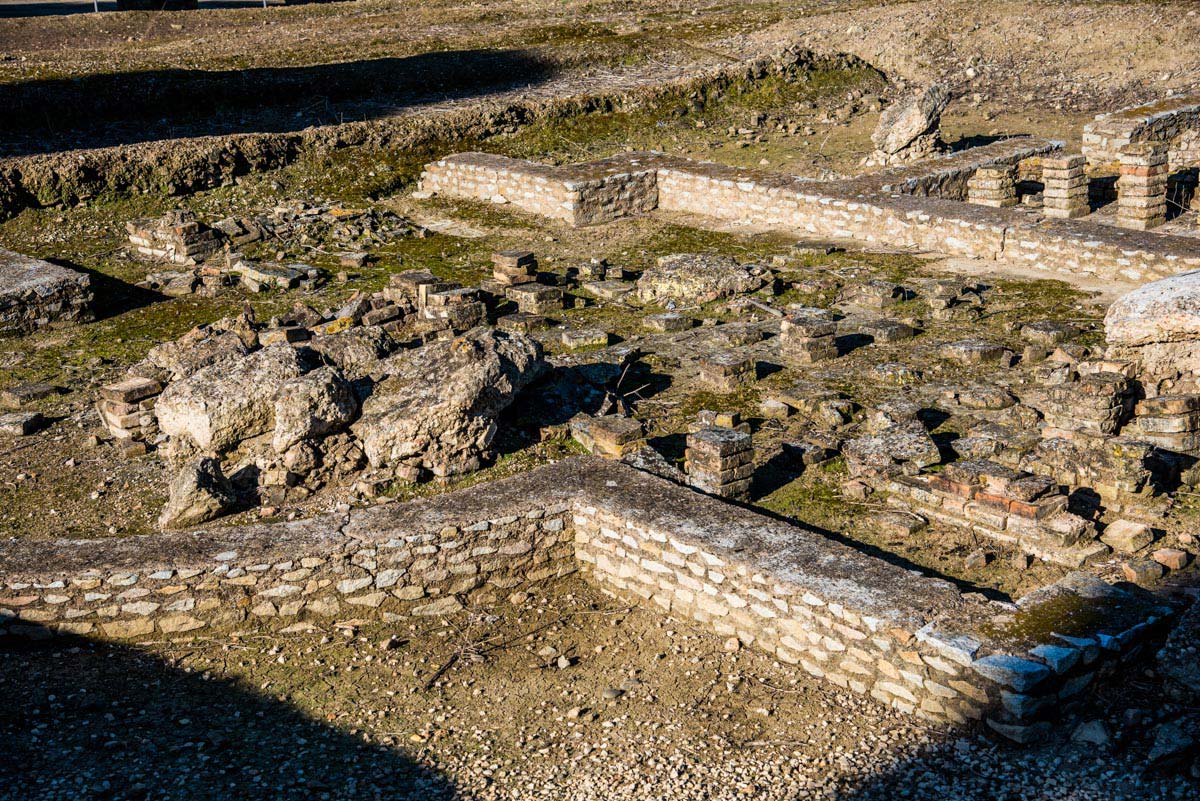
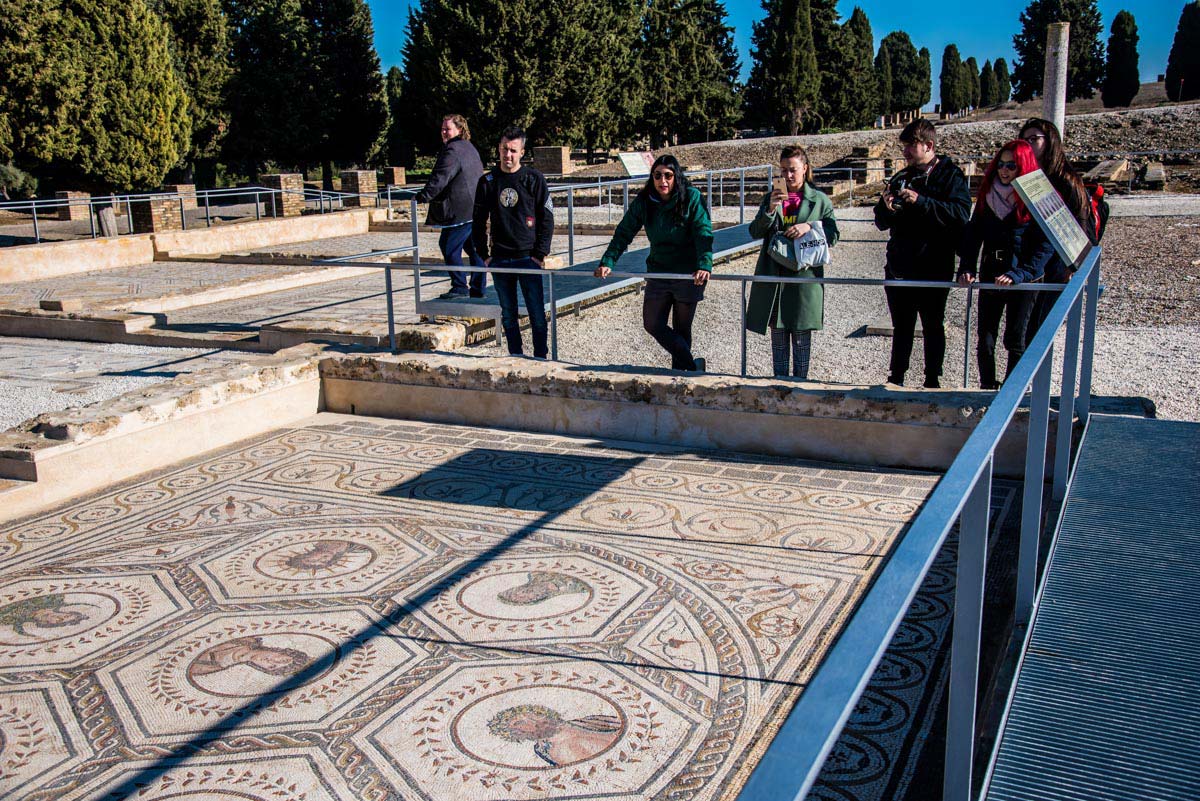
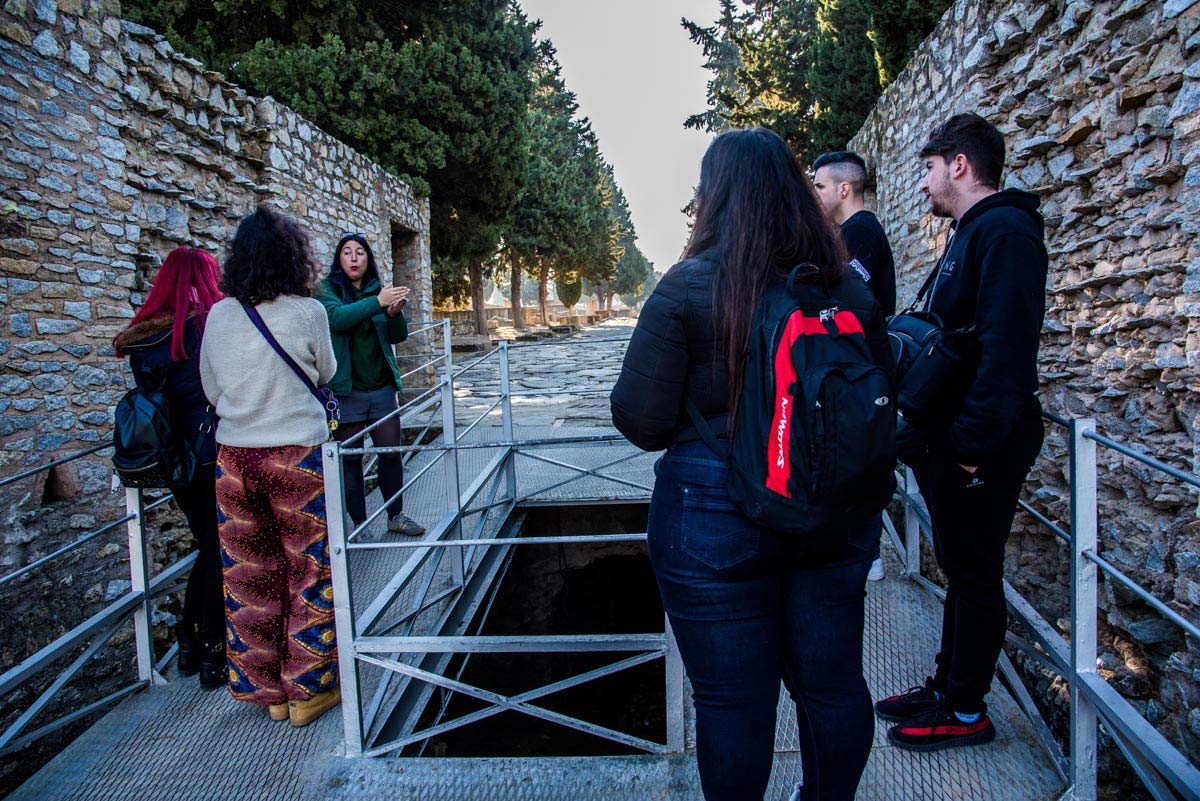
The walls of Italica
The walls of Italica came to cover more than 50 hectares and were built in different phases. The wall and the doors through which you will access the visitable space of Italica are dated in the era of the Emperor Adriano.
The walls of Italica had a defensive character, but also played a symbolic and religious role, because the influence of the gods and their temples was framed in the walled perimeter.
The visible remains of the walls of the Italica Archaeological Complex that you can visit are located at two points. The first is a tower from the time of Augustus, in the area of the Roman theater. The second is a canvas from the Adriaan period next to the amphitheater of Italica.
The Temple of Trajan of Italica
The Traianeum or Temple of Trajan, is the most representative building for the city of Italica. It was a public and religious space dedicated to the cult of Emperor Trajan.
Located in the highest area of the nova urbs, it was a large quadrangular enclosure with an interior plaza surrounded by a porticoed gallery with a hundred marble columns.
The Temple of Trajan had an infinity of sculpture, as well as a monumental sculpture of the deified emperor.
Birds house
It´s the type of house exclusively for the notables of Italica, located in a privileged area, with quality and construction and luxury finishes.
With a landscaped main patio. In one of the rooms that open to the patio, is the birds mosaic,, which gives the house its name.
The Birds house has a cistern in the basement of the peristyle, where rainwater was stored.
It also contains the so-called lararium, a small domestic altar where lares are worshiped, protective gods of home, family and business.
Neptune Building
It occupies an area about 6000 square meters. It has a thermal area and numerous mosaics, among which the Neptune in the frigidarium stands out.
Exedra Building
One of the largest buildings in the Roman city of Itaica. Its most representative space is the arena, an open field where physical exercise was practiced.
The building Exedra was a place for meetings and banquets. It also has a thermal bath area and a communal latrine decorated with pygmy figures.
Planetarium house
One of the main households of the Roman city of Italica in Santiponce. It houses some of the most notable mosaics, such as the Planetarium, which represents the seven stars of the solar system and which name each of the days of the week.
This house was also intended exclusively for the notables of Italica.
Book you visit to Italica
Rediscover the Roman city of Santiponce with the guided tour of Itálica.
